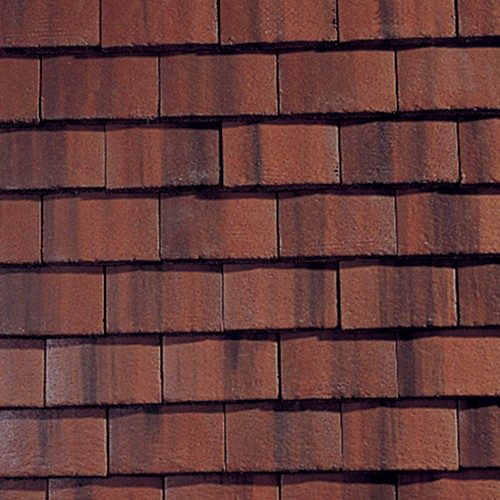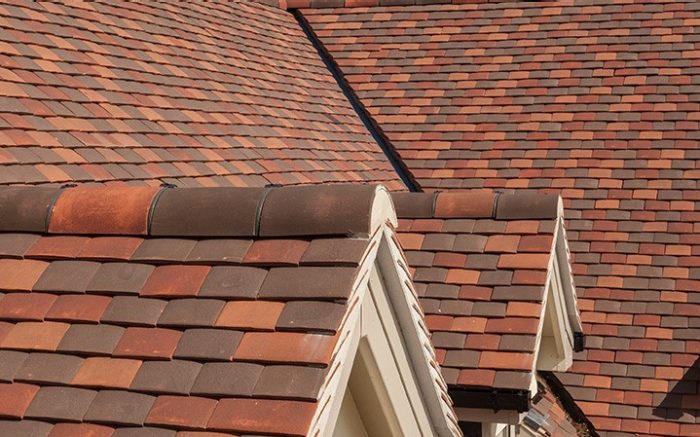
Types of Roof Tile Finishes
Choosing a roof tile with the right surface finish is crucial to the finished appearance of the roof and how it will look in the future. It is important for roofing contractors to understand why manufacturers use certain surface finish treatments, and how this affects the aesthetics and performance of the product in the short and long term.
Clay Tiles
The beauty of natural clay tiles lies in the way which they retain the natural colour of the clay material before maturing to a darker, richer shade. The degree to which this occurs and the rapidity with which any changes takes place depends upon two factors. The first is the nature of the tile itself, and the second is the environment in which it is laid.
Machine made tiles are extremely dense and durable. Accumulations of extraneous material are slow to take hold and the appearance of the tile is slow to change. The colour of the tile will not fade under any circumstances and the slow change that does take place will be a steady darkening of colour.
Due to the nature of the clay tile production process, slight colour variations are to be expected and actually in many cases enhance the look of the finished roof. We advise not to mix tiles from different batches on the roof and to achieve the best effect tiles should be taken from several pallets and mixed at random.
Some clay tile colours are achieved by applying an “engobe” to the surface of the tile prior to firing in the kiln. An engobe is a ceramic slip coating consisting of 45-90% clay, 10-40% Frits (glass) and 1-15% manganese oxides. The glass content produces a strong, vitrified scratch-resistant surface, whilst the manganese oxides give the required colour. The clay content means that when the tile is fired, the engobe and the tile 'fuse' together and become one, meaning that the coloured coating is as durable as the tile.

What is lime blow?
Occasionally clay tiles may show small white-centred chips on their surface. These occur when pockets of lime immediately below the surface expand, causing the surface above the lime to be pushed up or 'blown'. This expansion takes place as soon as the tiles leave the kiln as the tiles absorb moisture from the atmosphere. Lime occurs naturally in most clays and expansion can usually be prevented by the manufacturer submerging the tiles in water.
How can you prevent lime blow?
Manufacturers make every effort to prevent lime blows, although occasionally the process can still occur before the tiles have been fully soaked. The expansion action of the lime only occurs immediately after the tiles leave the kiln. The process stops once the tiles have absorbed moisture and cannot re-occur. Therefore there is no risk of further 'pitting' to the tile surface after the tiles have been laid on the roof.
It is a common misconception that clay products can be attacked by frost action due to irregularities within the surface finish but there is no possibility that the small pits, or 'lime blows', will affect the future durability of the tiles.
Choosing a Tile Surface Finish
Manufacturers take measures to make sure that their roof tiles have a protective and aesthetically pleasing surface finish so a new roof will look fantastic as soon as it is installed and for many years to come.
To see a true representation of a tile’s colour and surface finish, it is best to order a sample when possible. Manufacturers try their very best to recreate the exact colours of roof tiles in their brochures but can only be as accurate as the printing process allows.
